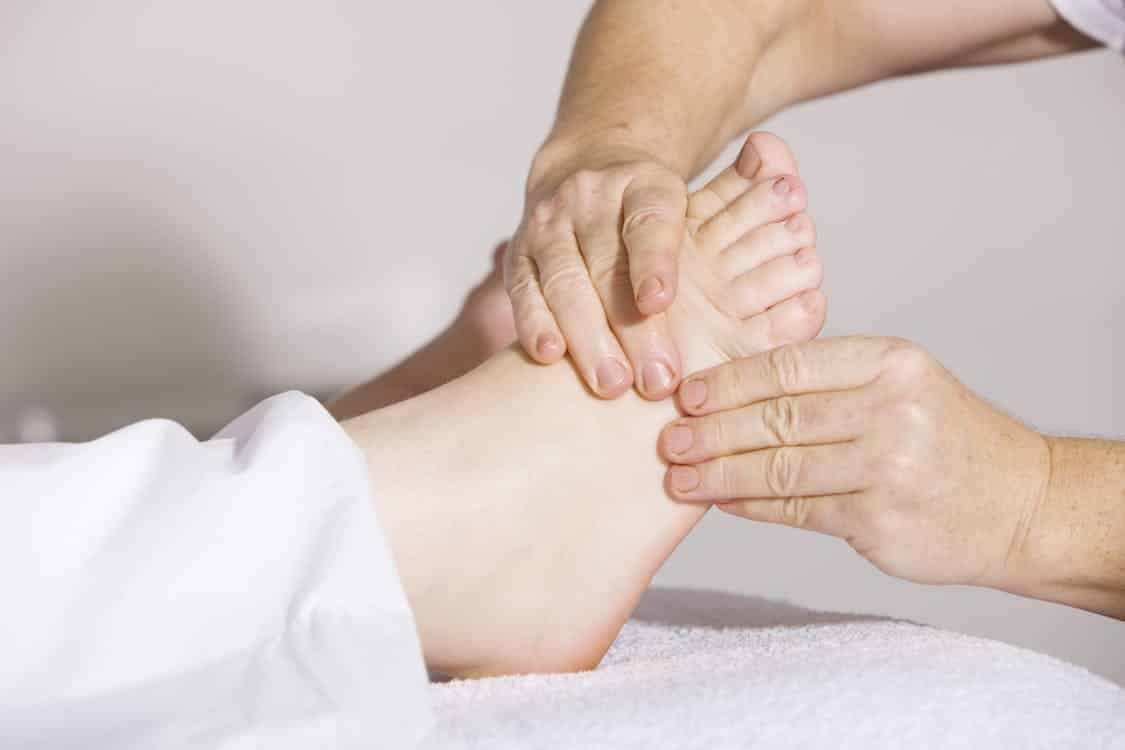Do you have Stubborn Plantar Fasciitis?
A lot of people come to me wanting treatment for stubborn plantar fasciitis that hasn’t eased up, despite treatment.
What I have come to realise over the years is that the diagnosis of plantar fasciitis is being broadly given to any kind of pain which appears anywhere from the heel to the toes.
The trouble is that if it’s diagnosed as plantar fasciitis and treated as such, but it’s not true plantar fasciitis, the pain won’t go away. This can lead to weeks, months, sometimes years of treating the wrong thing and not get any better.
So if your “plantar fasciitis” is stubbornly hanging round despite treatment, it could be something else.
What is Plantar Fasciitis?
“Plantar” comes from early 18th century Latin word plantaris, meaning sole. “Itis” means inflammation. “Fascia” is the connective tissue that binds the whole body together. It’s the thin film of white connective tissue you see between the different muscles on a leg of lamb or chicken maryland (apologies to the vegetarians). So the Plantar Fasciitis is inflammation of the connective tissue which surrounds the tendons, ligaments and muscles in the bottom of the foot.
This fascia on the sole of the foot is designed to be quite flexible and soft to allow your feet to move and bend around sharp objects on the ground as you run around in bare feet. When we wear shoes for years on end, we eliminate the need for the muscles to stay supple to bend around sharp objects. The body subsequently lays down calcium in the soft tissue making it more solid and sturdy.
Then one day, you take off your shoes and go for a walk on the soft sand on the beach or walk around in shoes with little or no support for a day, requiring the fascia to bend and flex. This creates micro-tears in the fascia, resulting inflammation and pain.
Is your pain from true Plantar Fasciitis?
If your pain is better first thing in the morning after the inflammation has settled down over night, it probably is plantar fasciitis. If the pain is in the arch of the foot and becomes worse as the day progresses (walking around aggravates the micro-tears in the bottom of the foot increasing inflammation), then the diagnosis of plantar fasciitis also is probably correct.
What else could it be?
If your pain is worst first thing in the morning and gets better when your lower legs and feet have warmed up a bit, then your pain is probably being caused by tight muscles. As your muscles are relatively still overnight, they can tighten up and feel sore through the night or first thing in the morning until you’ve moved around on them a bit to get the blood flowing… which makes the muscles warmer and softer. In my experience, around 70-80% of foot pain is caused by tight muscles.
The first helpful thing is to identify the precise location of the pain, as different areas point to different muscular causes.
Following are some areas where foot pain is commonly felt, along with the muscles which cause pain in that location:
- Back of the Achilles tendon can be caused by tibialis posterior muscle
- Inside of the back of the heel can be caused by soleus muscle
- Outside of the back of the heel can be caused by gastrocnemius muscle
- Middle or front of the heel can be caused by quadratus plantae muscle (this is often diagnosed as a heel spur)
- Inside of the heel extending up to the inside of the ankle can be caused by the toe flexor muscles
- Outside of the foot can be caused by the peroneus muscles
What type of treatment can help?
Once we know the cause of the pain, we can apply the correct treatment. In my clinic, I use a combination of acupuncture, massage and stretching to loosen the problem muscles leading to foot pain. Resolution of symptoms will often happen in 3 to 5 treatments in simple cases, if you’re generally healthy.
Hopefully this throws some light on what can be a very debilitating problem for many people.
If you would like to ask some questions, feel free to email me here or call for an appointment on 43255448

